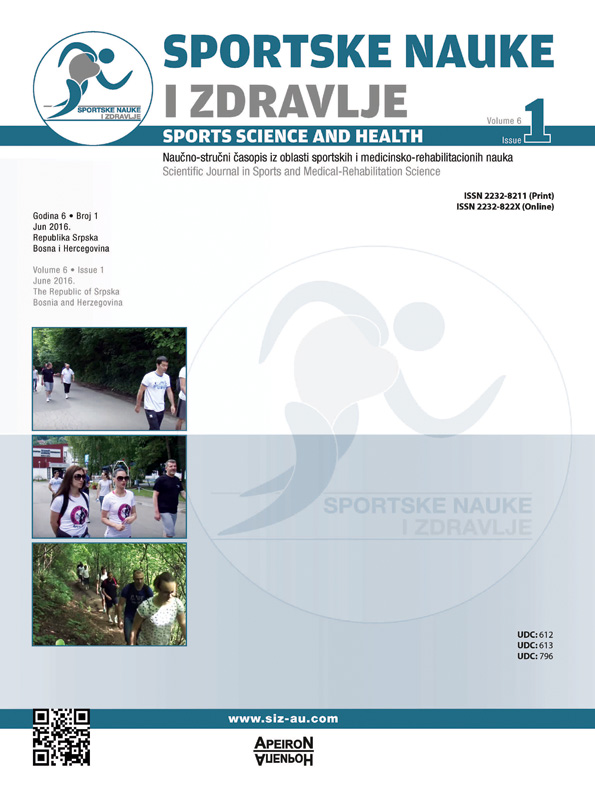Razlike u zdravstvenim pokazateljima kod nogometaša mlađih i starijih od 30 godina / Differences in health indicators in football players younger and older than 30 years
DOI:
https://doi.org/10.7251/SSH16062GAbstract
Numerous studies show that wide range of anthropological characteristics and health indicators significantly affects the success in football. Therefore, constant monitoring of these indicators provides to the coaches the information useful for the planning of the training process, adjusted to concrete athletes. This study explores selected morphological, physiological characteristics and health (MPH) indicators of adult football players of various levels of sporting excellence. The aim of the study was to determine the differences in MPH indicators, as well as their correlation, stratified according to the age group of the athletes. The different profiles of players were identified, in relation to selected MPH indicators. A sample of 813 male players is examined, 362 in the age group 17-30 years (M±SD 21.48±3.51) and 451 aged over 30 years (43.84±9.17), from Zagreb football clubs, included in medical examination at the Clinic for Occupational Health and Sport. Several differences in MPH are found between two age groups, mainly in direction more desirable features in younger age group. The results provide important information for planning training, but also for health prevention measures.Downloads
Published
2016-06-29
Issue
Section
Чланци
